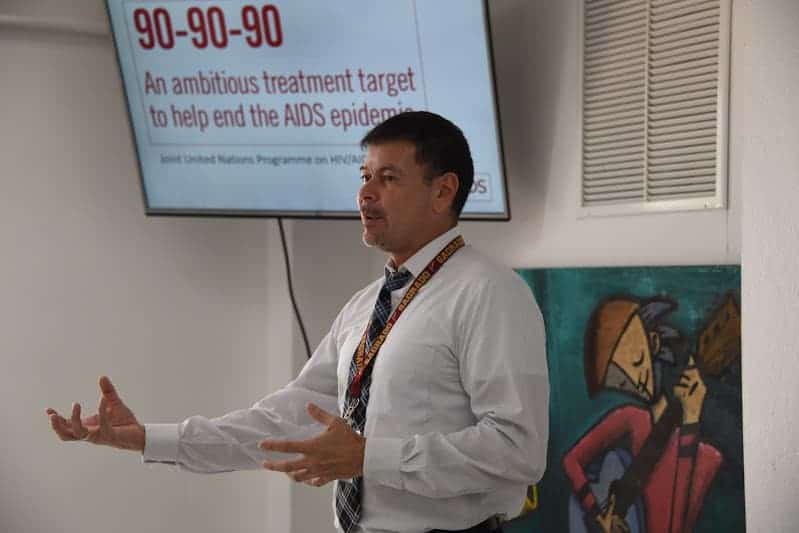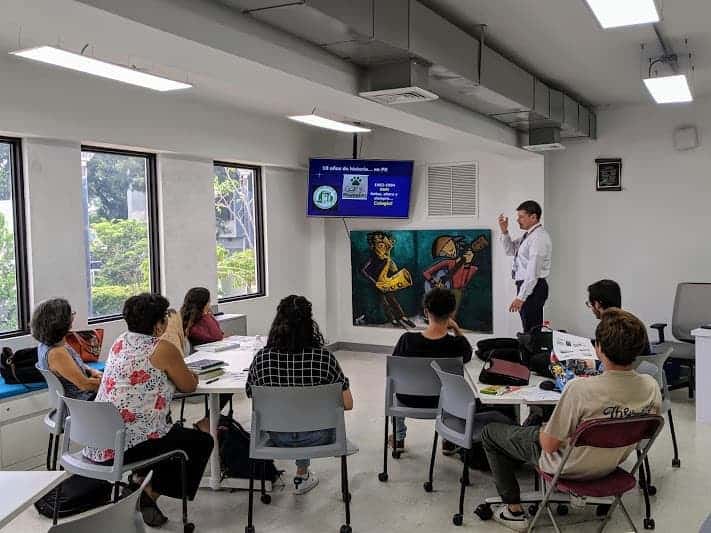Every day, 5 thousand new cases arise.

By Liz Yanira Del Valle Huertas
Overcoming taboo, publicizing new advances in medical treatment for AIDS patients, and disseminating other ways that contribute to its prevention. These were the central points of the conference titled “90 – 90 – 90, an ambitious goal for the end of the AIDS epidemic”, recently provided by Dr. Peter Barbosa to the Sagrado community.
According to Dr. Barbosa, director of Sagrado’s Department of Natural Sciences, few people know about the 90-90-90 movement, which is part of the Joint United Nations Program on HIV /AIDS (ONUSIDA-UNAIDS).
“The first objective is that 90% of the world’s population be tested for AIDS. Then, that 90% of those who were positive in the test undergo treatment. Finally, that 90% who started treatment achieve the suppression of the virus at an undetectable level”.
Dr. Barbosa
This doctor in biochemistry highlighted that one in three physicians are unaware of new treatments in existence for the control of this disease, which in 2018 registered the global figure of 37.9 million patients. Of those, 1,122,900 live in the United States.
“Since 1995, the situation regarding the epidemic has changed with the application of what is known as the Highly Active Antiretroviral Therapy (HAART) cocktail, which today has been integrated into a single pill”.
Dr. Barbosa
According to the researcher, the survival period of the patients increased to the point that many managed to totally eliminate the viral particle that affected them. Studies show that, since 2003, deaths associated with AIDS decreased by 43% globally. The antiretroviral drug was effective.

“We’ve always heard about sexual abstention, the use of prophylactics, and to avoid sharing syringes. Now, there is another option in what is known as PREP, (Pre-Exposure Prophylaxis). This preventive pill (Truvada) is an option for people who test negative to the virus but have active sex lives. If you spend time with a person who tested positive for the virus, it is important that they do not stop treatment,” stressed the scientist.
Regarding the statistics on people under treatment, Dr. Barbosa indicated that, in 2000, less than one million people would receive it, but in 2016, 18.2 million people worldwide were already taking the medication. In turn, he stressed that the goal is to have 30 million patients receiving antiretroviral treatment by 2020.
The scientist clarified that it is one thing to be HIV positive (to carry the virus), and another thing to be an AIDS patient. He explained that the latter is a patient who has a progression of the virus that presents opportunistic diseases and various clinical manifestations.